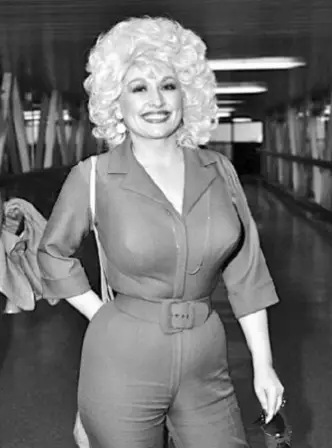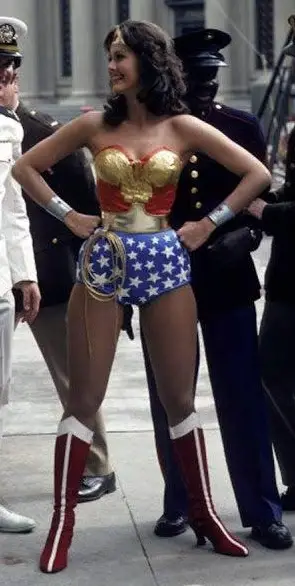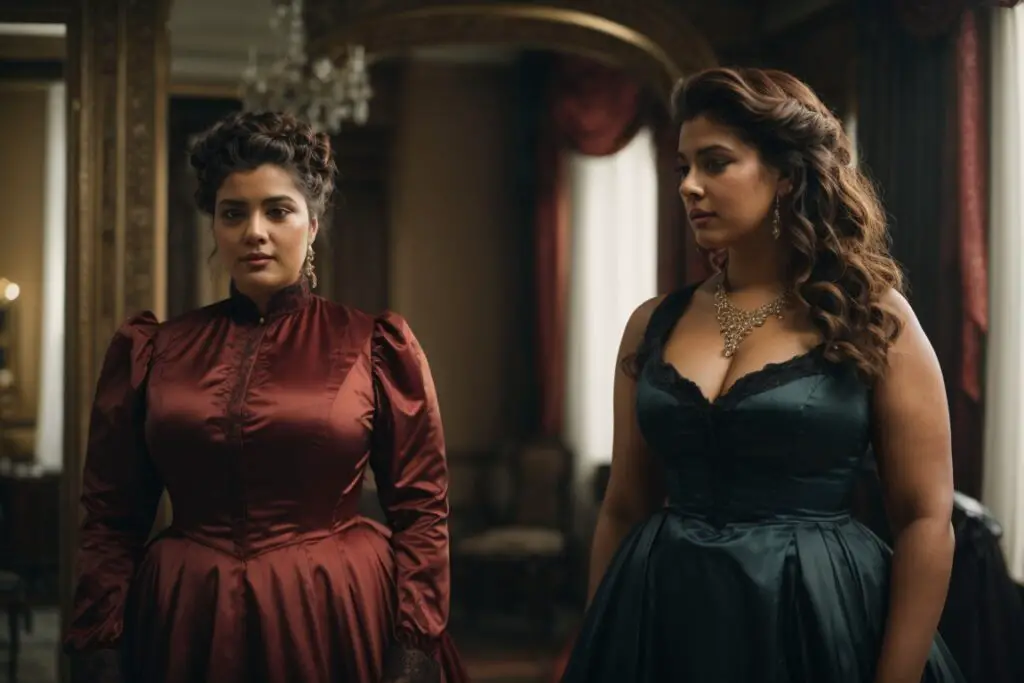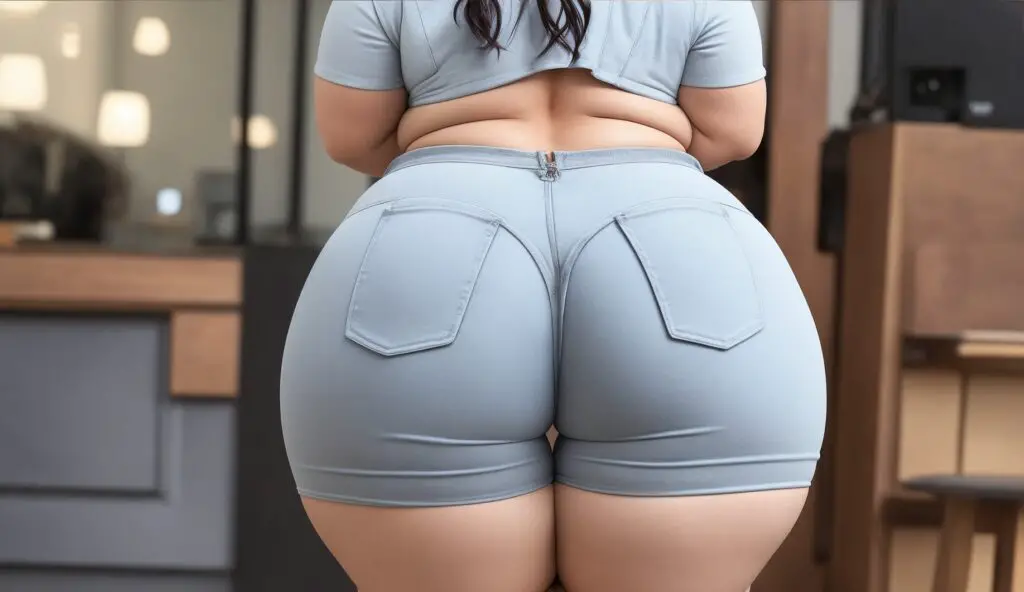Unless you look back at the days of Marilyn Monroe in the late 1950s and early 1960s, then it seems like being curvy has been out of style for too long now. Or has it been? Could it be that fashion has been trying to recreate curvy looks without being overt about it? How so?
Between corsets, flared-out dresses, and bust-boosting looks, the features of curvy women have always been coveted by the fashion world even if a larger body wasn’t in vogue at the time. Now, curvy culture is more widely accepted than ever!
In this article, I’ll examine the fashions that have been popular for years before curvy bodies were. The goal is to make you realize that curves have always been covetable and continue to be to this day.
5 Curve-Creating Fashions That Prove That Curves Were Always In
As I mentioned in the intro, if you look back over fashion history, you’ll realize something. More often than not, curvy has not been the popular body type.
Skinny style started in the 1910s when an impossibly cinched waist and hourglass figure were desirable. In the ‘20s, it was all about being rail thin.
By the 1930s, curvy gals had a slight fashion moment that came back to life stronger than ever in the 1950s. Then, until the 2010s, curves were not the beauty standard.
Funny then how for a body type that wasn’t “in,”, the following popular styles highlight existing curves for some women and create them in many more!
Corsets
The first of these styles I want to discuss is the corset.
A corset is a strapless shaping garment that you can wear as clothing or underneath your clothes.
You put it on, lock all the eyelets, pull the accompanying strings, and voila, you look slimmer in the middle yet thicker in the hips and chest.
In other words, you create that ultra-desirable hourglass shape even if your body doesn’t necessarily have that shape on its own.
The boning featured throughout corsets as well as their tightness don’t always make them a very comfortable garment, but some women would wear them in the hopes that squeezing their internal organs for long enough would make them look slimmer.
There’s no evidence that that’s true, fortunately!
That said, I can definitely see how corsets caught on from the time they were created sometime in the 1500s and why they’ve remained trendy even through the 2020s.
Curvy women could accentuate their natural assets while hiding trouble areas like their tummies while less curvy women could create the illusion of curves with a corset on.
By wearing the corset underclothes, even tinier ladies can enjoy the power of feeling curvy and voluptuous!
Flared-Out Dresses
It’s not always about looking bigger up top (although trust me, that matters too, as I’ll talk more about later).
Sometimes, straight-legged women want the look of curvier hips, and a flared dress is the way to achieve it.
A flared dress, also known as the fit and flare dress, features a fitted upper half.
Remember, wearing one of these dresses isn’t about creating the illusion of a bigger bust, as a fit and flare dress doesn’t do the wearer favors upstairs (unless they already have a lot to work with).
The fitted part of the dress goes to about the waistline and then extends outward around the hips.
The shape of the dress is designed to call visual attention to the wearer’s middle where that dramatic extension occurs.
Due to the shape of the dress, the wearer looks like her hips and even her rear is larger even when neither is necessarily true.
Fit and flare dresses first started appearing on store shelves in the 1930s. This was the decade when a more curvaceous style was embraced but women were still expected to have skinny waists.
The fit and flare dress certainly achieved that look for the ladies of the day who maybe didn’t naturally have curves in only the right places (I mean, who does?).
Fortunately, the fit and flare dress has endured to this day. Women of all shapes and sizes look good in this dress shape, even curvy gals, as it doesn’t hug too tightly around the stomach.
Flared Jeans
Another bottom-heavy fashion staple is flared jeans, aka bell bottoms.
I’m sure you’re very familiar with this style of jeans but allow me to explain for those who might not be. Bell bottoms feature a straight cut until the knees. Then the jeans flare out dramatically in the shape of a bell.
Bell bottoms originated at the start of the 19th century when U.S. Navy sailors wore the pants.
At the time, sailors didn’t have one particular uniform, so they wore what was comfortable and functional, and bell-bottoms were it.
As for fashion, bell bottoms as jeans appeared in London in the ‘60s. Both men and women wore them. It wasn’t long before the trend exploded across North America and Europe.
The trend continued into the ‘70s but died out before the decade ended. Well, until the ‘90s when bell bottoms were back again.
Although bell bottoms don’t create the illusion of wider hips in the same way that a fit and flare dress does, what’s undeniable is that the trend has–since its nautical origins, at least–become very much about making the wearer’s bottom half look larger.
The decades that bell bottoms were popular, which were the ‘60s and ‘70s, and then the ‘90s, all idolized ultra-thin women like Twiggy or Kate Moss. Bell bottoms introduced curves back into the mainstream when the beauty ideals weren’t.
Now that curvy is in again, bell bottoms aren’t as popular. Today, it’s more about bootcut jeans and skinny jeans. Strange!
Peplum
These days, you turn around it and see it everywhere, in dresses, tanks, and shirts. I’m talking about peplum, of course.
Peplum isn’t a type of clothing on its own, per se, but rather, it refers to the ruffle that you’ll often see around the aforementioned dress, tank top, or stylish dress shirt.
The peplum style is technically a type of overskirt that had side points due to the way that the back and front were cut.
The original peplum garments came from the late 1860s, died out, came back in the 1890s, and then died out again.
Then, sometime in the 20th century, peplum in a very generic way came back, as any overskirt that had points due to the way it was cut could be considered peplum, as could a basque that went past your hips.
The peplum boom as you and I know it is more modern than it happened in the 2010s. The fashion world fell in love, as adding a ruffle around the midsection made any garment look so darn cute.
Do you know what else a peplum ruffle does? It creates the illusion of wider hips due to the way the ruffles flare out.
Once more, peplum is a way for a woman to enjoy the look of having curves even if her body is skinnier or straighter.
The time of peplum’s popularity explosion makes sense, as in the 2010s, the beauty standard is Kardashian curves.
That kind of body type still isn’t attainable for most women, but with a peplum shirt or dress, an average woman’s frame would look a little closer to Kim Kardashian’s.
Like many of the styles I’ve talked about, peplum flatters larger women as well. If you feel self-conscious about your stomach, a peplum ruffle or two makes you look slimmer.
Bust-Boosting Anything
Speaking of the Kardashians, one of their effects on society has been that bigger is better in the chest department.
Now, don’t get me wrong, that’s kind of always been the prevailing belief for women. For many of the decades that adored slimmer women though, smaller bust sizes were the beauty standard of the day.
There’s a reason that shapewear is such a common fashion accessory these days and why women will put makeup on their chests to contour their way to what seems like larger breasts. Women want to look bustier.
Having curves usually means being busty as well. If anything, some curvy women look for ways to downplay their chests so they can feel appropriately dressed for situations like going to the office.
Bust-boosting style is just another way that curvy style has bled into the mainstream!
4 Women Who Bravely Embraced Their Curves Over the Years
These days, if there’s one word you hear when discussing plus-sized women, it’s brave.
It’s true that we have a lot of brave women today, but that’s been the case throughout history as well. Here are some women who weren’t afraid to blaze a new trail and showcase their curves, even when larger bodies weren’t in.
Dolly Parton

Dolly Parton is a much-beloved celebrity and icon who today is as popular for her theme park, dedication to children’s reading, and philanthropy as she is her music.
Parton’s figure is also undeniably a part of her appeal, as she has a huge bust and a tiny waist.
Her career began in the 1960s when stick-thin gals were in and continued through decades in which skinny was perceived as best. Dolly bravely bucked that trend with her curvaceous frame.
Rather than hide her voluptuousness, she embraced it, wearing bust-revealing outfits and tight clothing that showed off her soft edges. It’s no wonder she’s known as such a badass nowadays!
Marilyn Monroe

I can’t talk about curvy women without discussing Marilyn Monroe.
Years and years before Dolly Parton rose to prominence, Monroe helped usher in a decade where soft femininity and curves were wholly embraced and accepted as the beauty standard. That wouldn’t happen again until the 2010s.
A model and a huge actress in her day, Monroe was the master of publicity. She crafted a public image in a day when branding wasn’t something people talked about.
Monroe played up the dumb blonde image, put on a cutesy voice, and embraced her seductress side as much as she wholeheartedly did her curves.
It’s no wonder that people today still talk about her all the time and emulate her so!
Lynda Carter

It takes a lot to play a character like Wonder Woman. You need toughness, smarts, beauty, and curves?
Well, maybe not the last part, as the world hasn’t seen a curvy Wonder Woman since Lynda Carter retired the character’s golden crown.
Carter–who is maybe the best-known Wonder Woman since Gal Gadot–played the beloved superheroine in the 1970s, which you’ll recall was a period when stick thin was in.
The strapless Wonder Woman costume that Carter wore showed off her bountiful bust, voluptuous stomach, wider hips, and curvy thighs.
Due to the popularity of the Wonder Woman television show and Carter’s growing fame, she became an icon for women and girls everywhere. They wanted to look like her, and that included having a more curvaceous frame!
Julie Newmar

Speaking of actresses playing superhero characters, Julie Newmar also paved the way for more curves in DC characters like Catwoman.
It’s hard to pick a favorite Catwoman portrayal from the 1970s, but for many, Newmar is fondly remembered. The skintight catsuit she had to wear was incredibly unforgiving, but fortunately for her, Newmar’s curves won her a lot of acclaims.
Maybe she wasn’t quite as voluptuous as Lynda Carter–you have to remember the beauty ideals of the 70s–but Newmar was certainly anything but rail-thin.
Her portrayal of Catwoman did help usher in the perception that not all women had to be skinny to be confident, powerful, and beautiful!
Conclusion
Every decade, we get a new set of beauty standards that most women can’t live up to.
Curvy gals have been left out of those so-called beauty standards for decades while slimmer women have long since been trying to achieve a bigger bust, wider hips, and a curvier figure through how they dress.
I hope your takeaway then is this. Beauty standards shouldn’t define you. They change all the time anyway.
Even if being a curvier lady isn’t the current beauty standard, decades and decades of fashion prove that it’s always trendy to have a shapely body!



